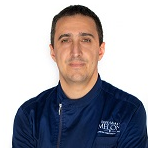Oral Implantology and Bone Regeneration
A special issue of Dentistry Journal (ISSN 2304-6767). This special issue belongs to the section "Dental Implantology".
Deadline for manuscript submissions: closed (29 February 2024) | Viewed by 17946
Please submit your paper and select the Journal "Dentistry Journal" and the Special Issue "Oral Implantology and Bone Regeneration" via:
https://susy.mdpi.com/user/manuscripts/upload?journal=dentistry
Please contact the Managing Editor Ms. Adele Min (adele.min@mdpi.com) before submitting.
Special Issue Editors
Interests: implant dentistry; fixed prosthodontics; oral surgery; bone reconstruction
Special Issues, Collections and Topics in MDPI journals
Interests: oral implantology
Special Issue Information
Dear Colleagues,
This Special Issue is focused on oral implantology and Guided Bone Regeneration. Clinical articles and case reports, as well as retrospective studies, are welcome that focus on regeneration and computer-assisted oral implantology topics. The aim of this Special Issue is to implement and share knowledge on gold standards and new approaches in oral implantology.
Dr. Silvio Mario Meloni
Dr. Aurea Immacolata Lumbau
Dr. Milena Pisano
Guest Editors
Manuscript Submission Information
Manuscripts should be submitted online at www.mdpi.com by registering and logging in to this website. Once you are registered, click here to go to the submission form. Manuscripts can be submitted until the deadline. All submissions that pass pre-check are peer-reviewed. Accepted papers will be published continuously in the journal (as soon as accepted) and will be listed together on the special issue website. Research articles, review articles as well as short communications are invited. For planned papers, a title and short abstract (about 100 words) can be sent to the Editorial Office for announcement on this website.
Submitted manuscripts should not have been published previously, nor be under consideration for publication elsewhere (except conference proceedings papers). All manuscripts are thoroughly refereed through a single-blind peer-review process. A guide for authors and other relevant information for submission of manuscripts is available on the Instructions for Authors page. Dentistry Journal is an international peer-reviewed open access monthly journal published by MDPI.
Please visit the Instructions for Authors page before submitting a manuscript. The Article Processing Charge (APC) for publication in this open access journal is 2000 CHF (Swiss Francs). Submitted papers should be well formatted and use good English. Authors may use MDPI's English editing service prior to publication or during author revisions.







